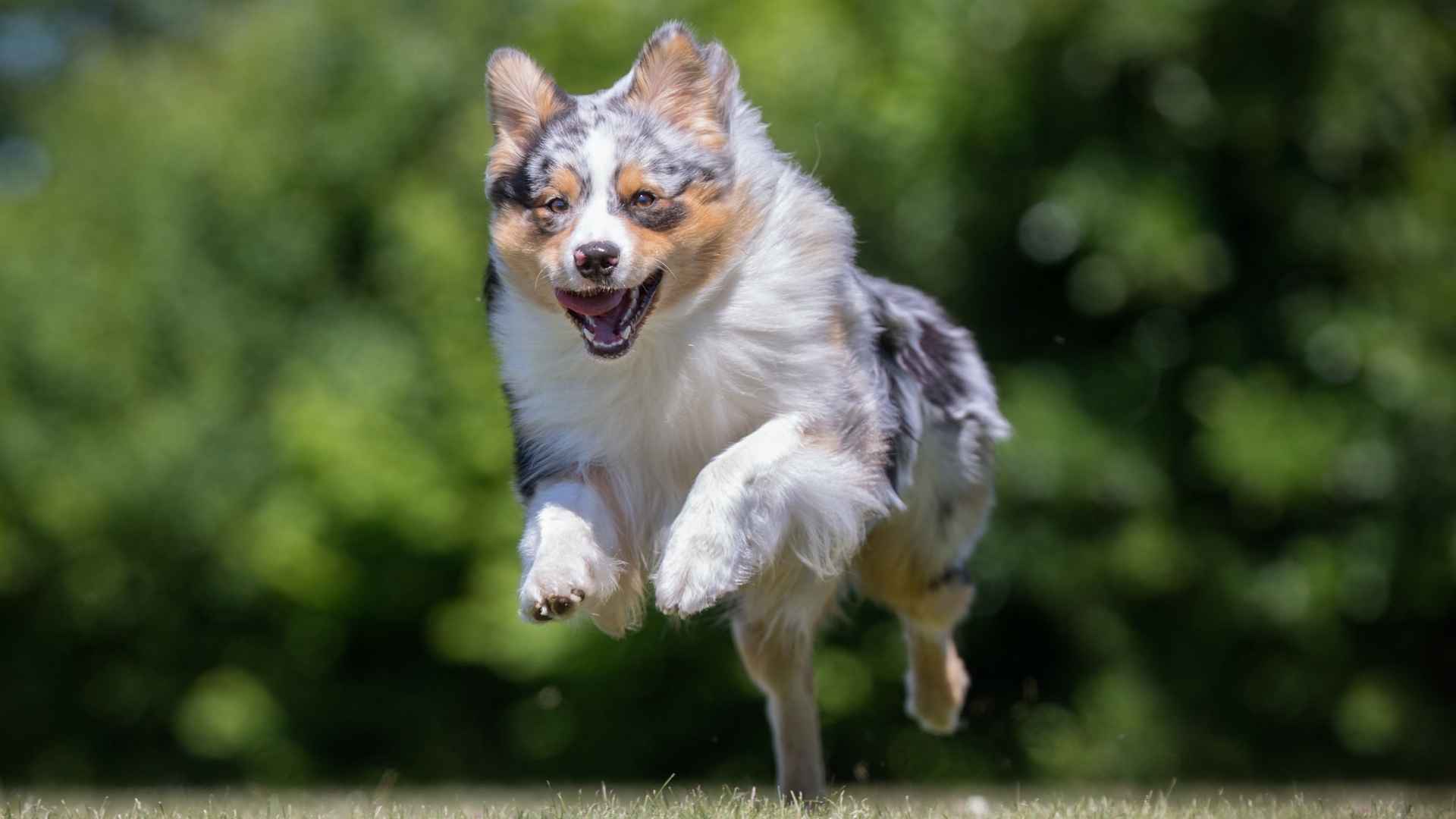Just like humans, dogs can experience a wide range of health issues, from joint problems and heart disease to allergies and skin conditions. While no pup is completely immune to illness, some breeds are simply built with better genetic luck. If you’re looking for a companion that’s not only lovable but also likely to enjoy a longer, healthier life, learning about the healthiest dog breeds is a great place to start.
Genetics play a major role in determining a dog’s overall well-being. Certain breeds tend to avoid chronic ailments and are known for their vitality, energy, and resilience. While individual health can vary, choosing a breed with a strong health track record may mean fewer trips to the vet and more years of tail wags and adventures together.
In this article, we’ll explore dog breeds that are widely recognized for their robust health and longevity. With the right care, diet, and regular exercise, these healthy breeds can lead vibrant lives and keep their humans smiling every step of the way.
Healthiest Dog Breeds
1. Australian Cattle Dog
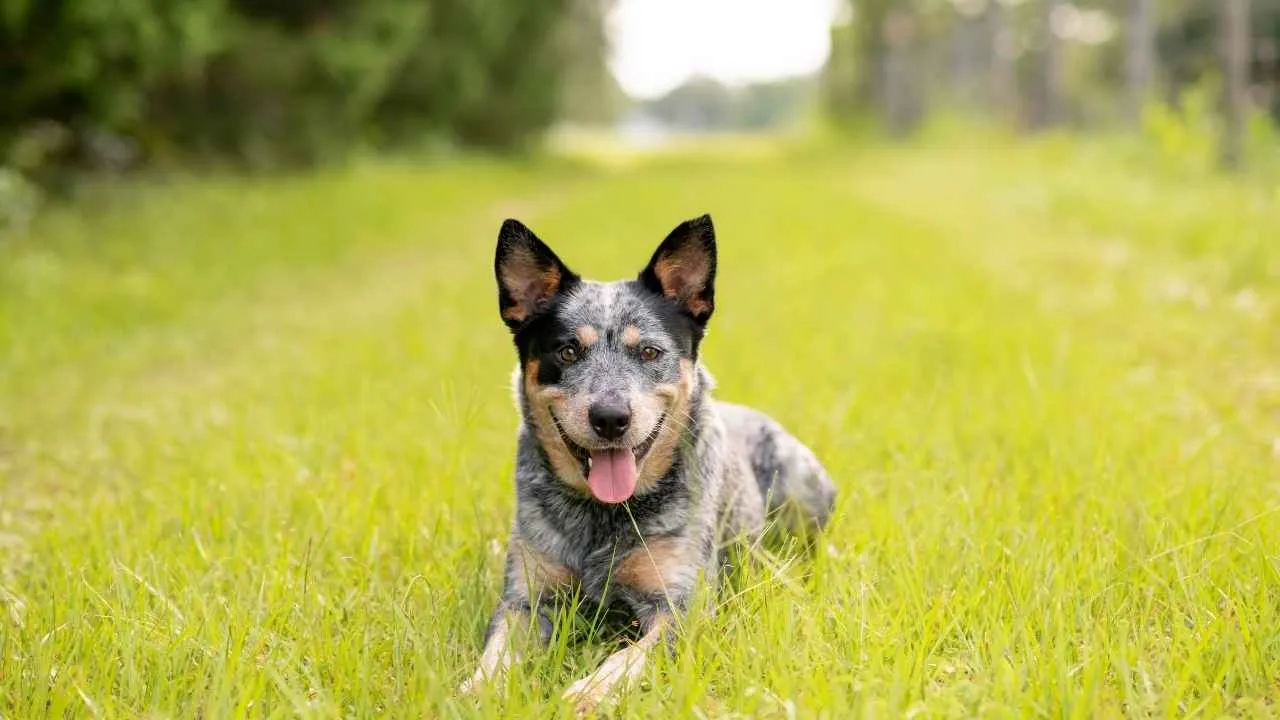
According to the AKC, the Australian Cattle Dog is known for its loyalty, sharp intelligence, and determined nature. These dogs require consistent mental and physical engagement. Without adequate activity, they can grow restless and destructive. Regular exercise, herding work, or dog sports are essential to their health and happiness.
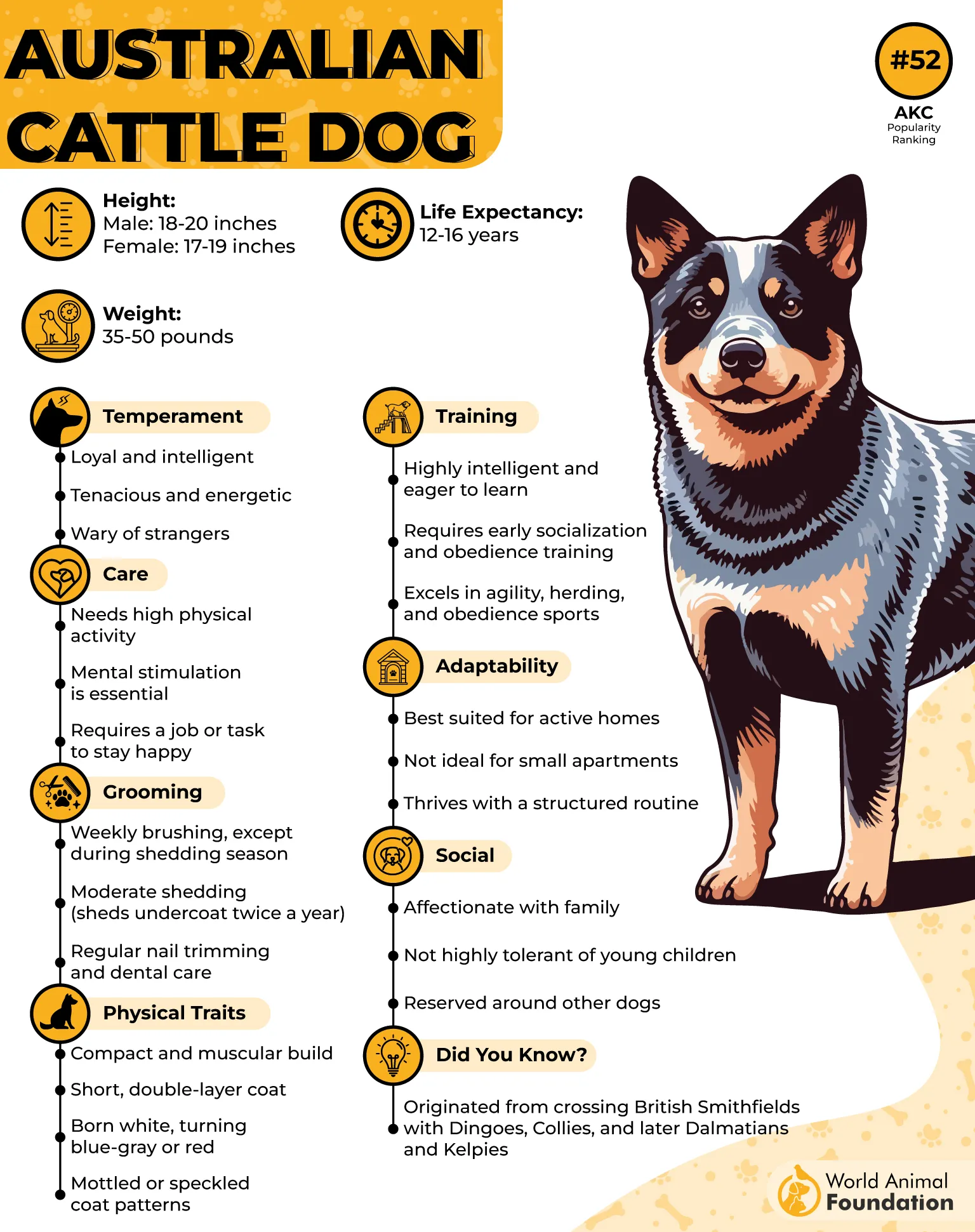
What Contributes to Their Excellent Health?
Australian Cattle Dogs are among the healthiest breeds and have minor health issues, with a reputation for remarkable endurance and hardiness. They are one of the healthiest dogs. Their lean, muscular build and active lifestyle help them maintain excellent physical condition throughout life.
What Sets Them Apart From Other Breeds?
Born with white coats that later turn red or blue-gray with distinctive speckling, ACDs are descendants of the wild Dingo. Also known as Blue or Red Heelers, their alertness and tenacity make them loyal companions and skilled herders. Their compact frames, measuring 17 to 20 inches tall, are built for stamina and agility.
Fun Fact: With enough stimulation and care, Australian Cattle Dogs can live up to 16 years, often outsmarting their owners along the way!
2. Beagle
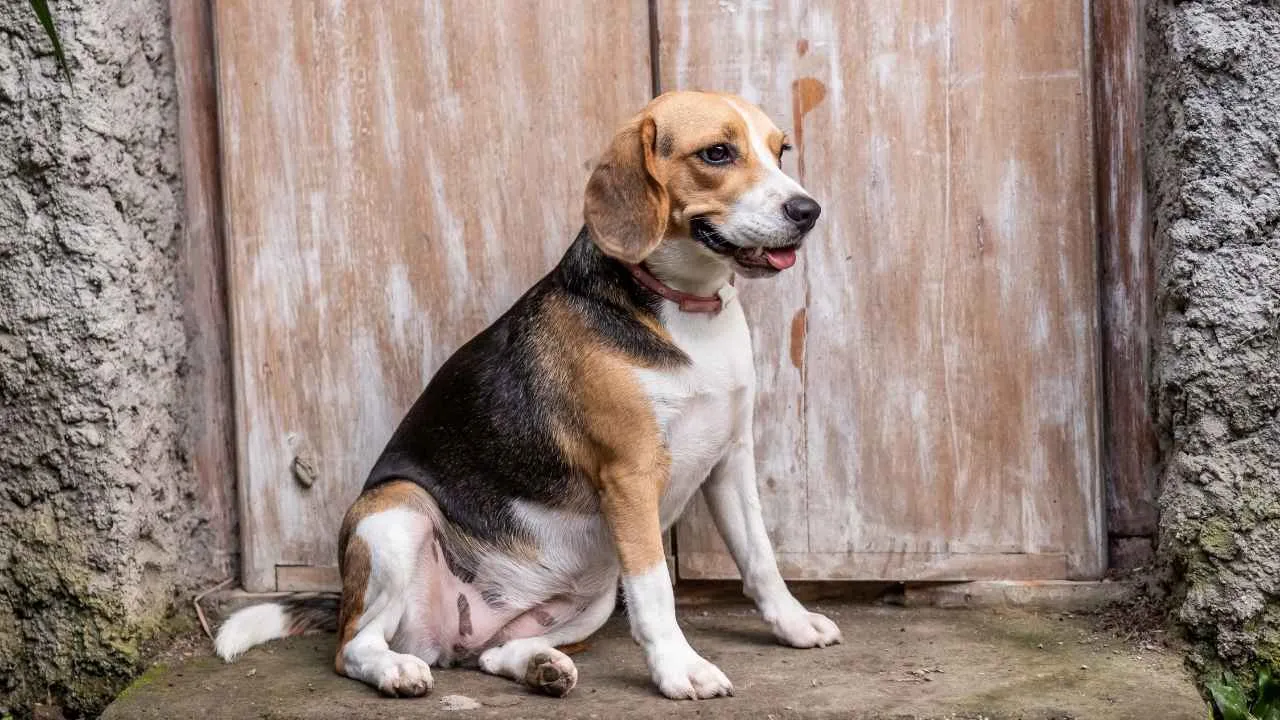
Beagles are naturally active and cheerful, known for their stamina and love of play. Their compact build and boundless energy make them resilient companions who thrive with daily activity and exploration.
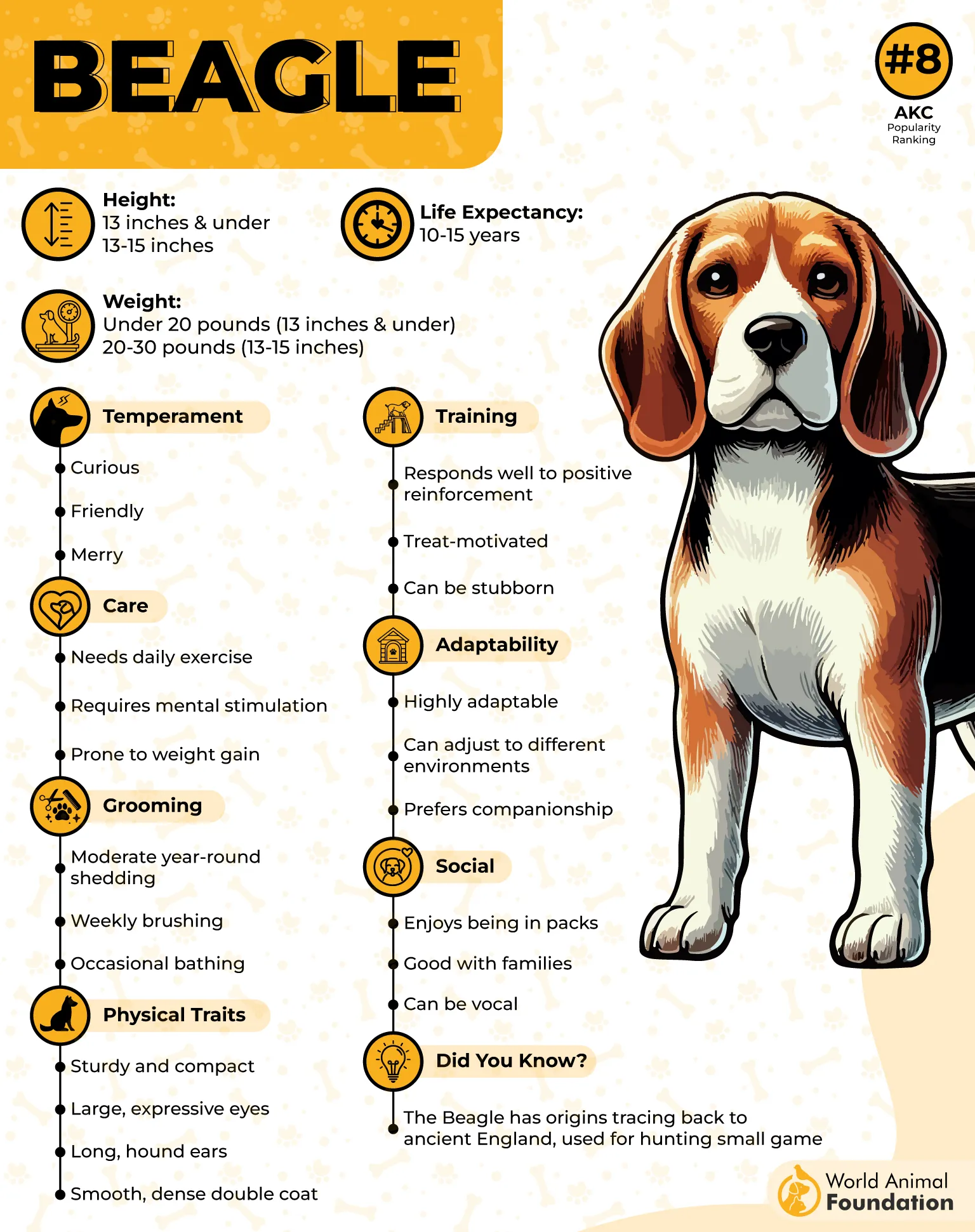
What Health Considerations Should Owners Know?
Though generally robust, Beagles are prone to overeating and need a controlled diet to avoid obesity and other related health concerns. Regular dental care and ear checks are important to prevent ear infections, and responsible breeders screen for issues like hip dysplasia, hypothyroidism, and eye conditions.
What Makes Their Instincts So Strong?
Originally bred for tracking and hunting, Beagles are ruled by their noses. This intense scent drive makes them excellent at scent training, but also likely to follow smells into mischief if not monitored closely.
Fun Fact: The Beagle’s incredible sense of smell and determination have earned it a place in detection work, including airport security roles around the world.
3. Australian Shepherd
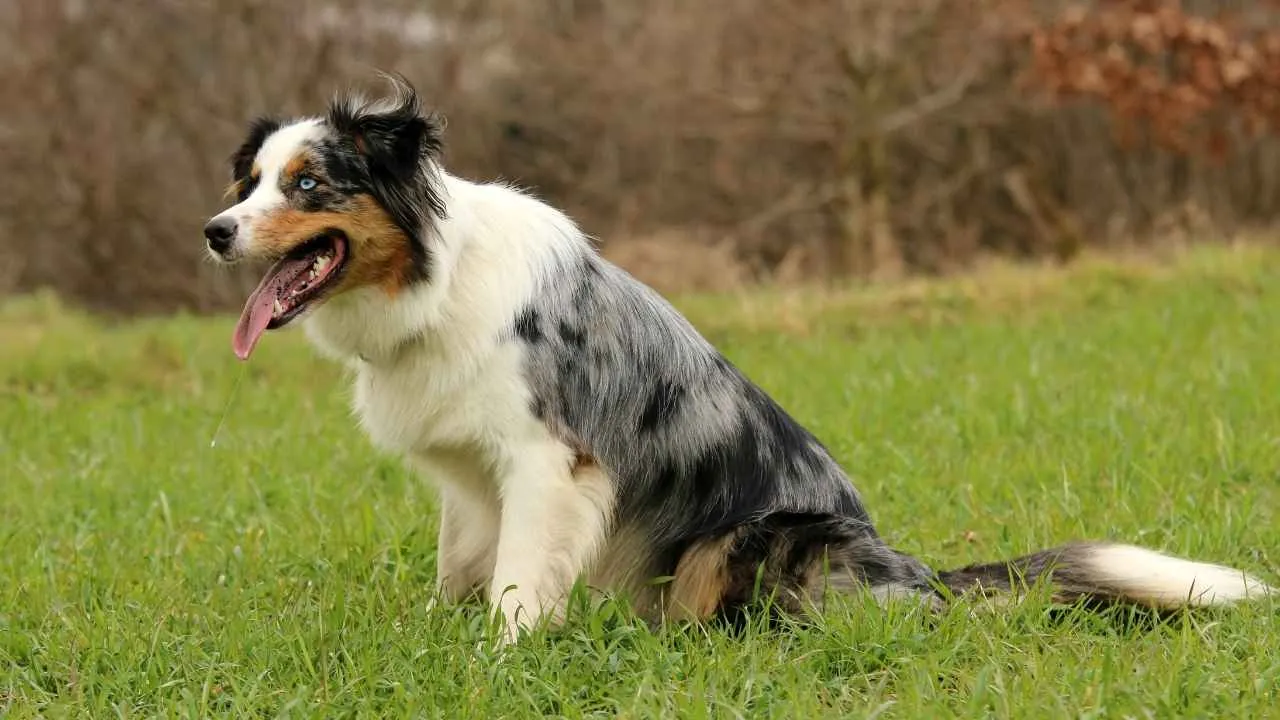
Britannica reports that the Australian Shepherd is a herding breed that, despite its name, was actually developed in the western United States during the late 19th century. It primarily descended from herding dogs of British origin, many of which reached the American West through the East and Midwest, with some arriving from Australia.
Additionally, some of the breed’s ancestors may have been brought by Basque immigrants from the Pyrenees Mountains between France and Spain, where a related breed known as the smooth-faced Pyrenean Shepherd evolved.
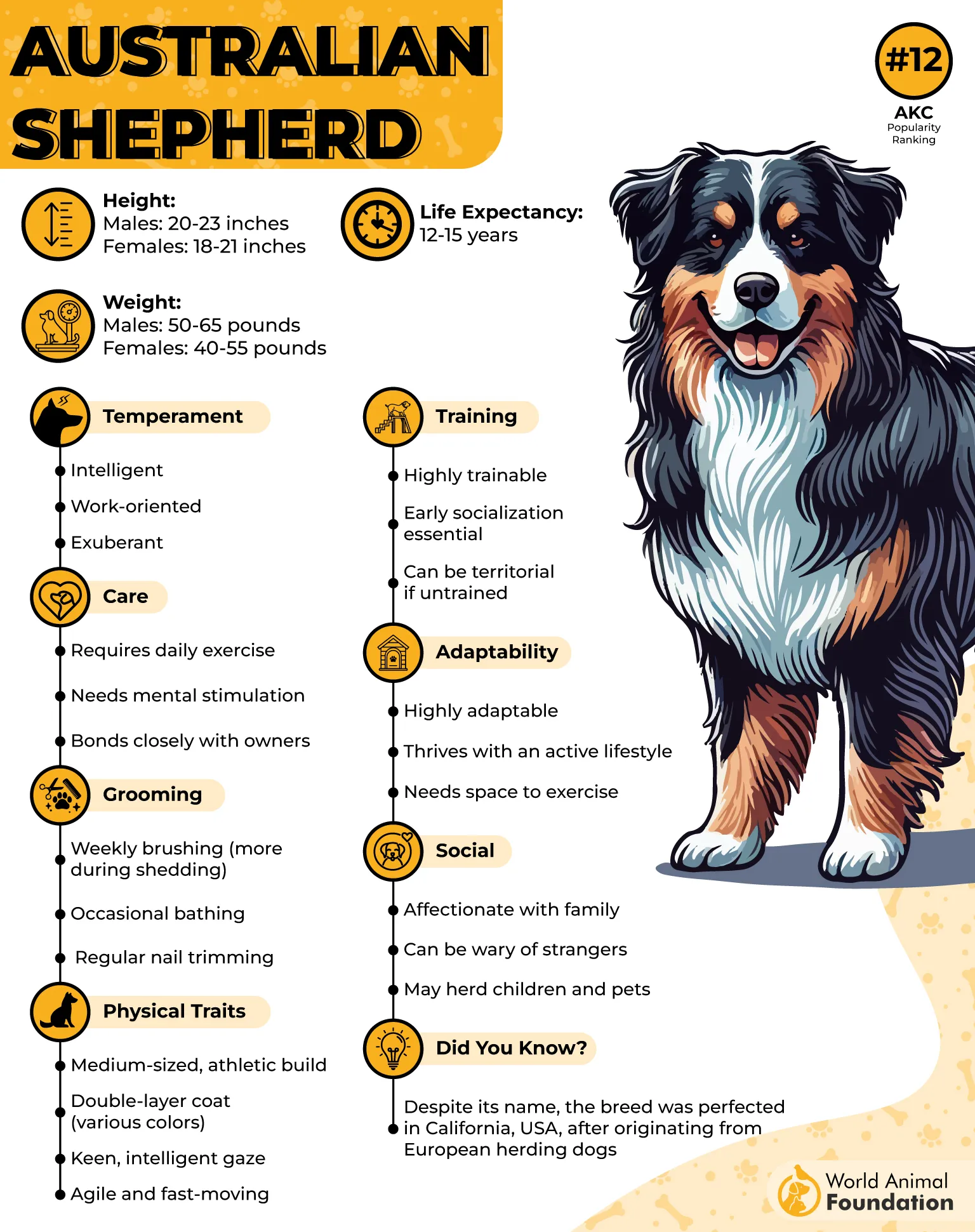
What Makes Their Background Unique?
These herding dogs thrive with advanced obedience training and tasks that challenge their minds. Some are born with naturally short bobtails, which should not be paired in breeding due to potential spinal defects. Weekly brushing and a secure yard help maintain their coat and lifestyle needs.
Why Are They So Resilient?
These purebred dogs are intelligent, energetic dogs with a strong work ethic. Their active lifestyle, love for exercise, and natural agility help keep them in peak physical condition when properly engaged.
What Health Risks Should Be Considered?
While generally healthy, Aussies are prone to certain conditions like cataracts, epilepsy, and hip dysplasia. Special caution is needed when breeding merle-patterned dogs, as two merles can produce offspring with severe hearing and vision impairments.
Fun Fact: Despite their name, Australian Shepherds were developed in the United States, where they became popular with ranchers and rodeo performers for their herding prowess and trainability.
4. Basenji
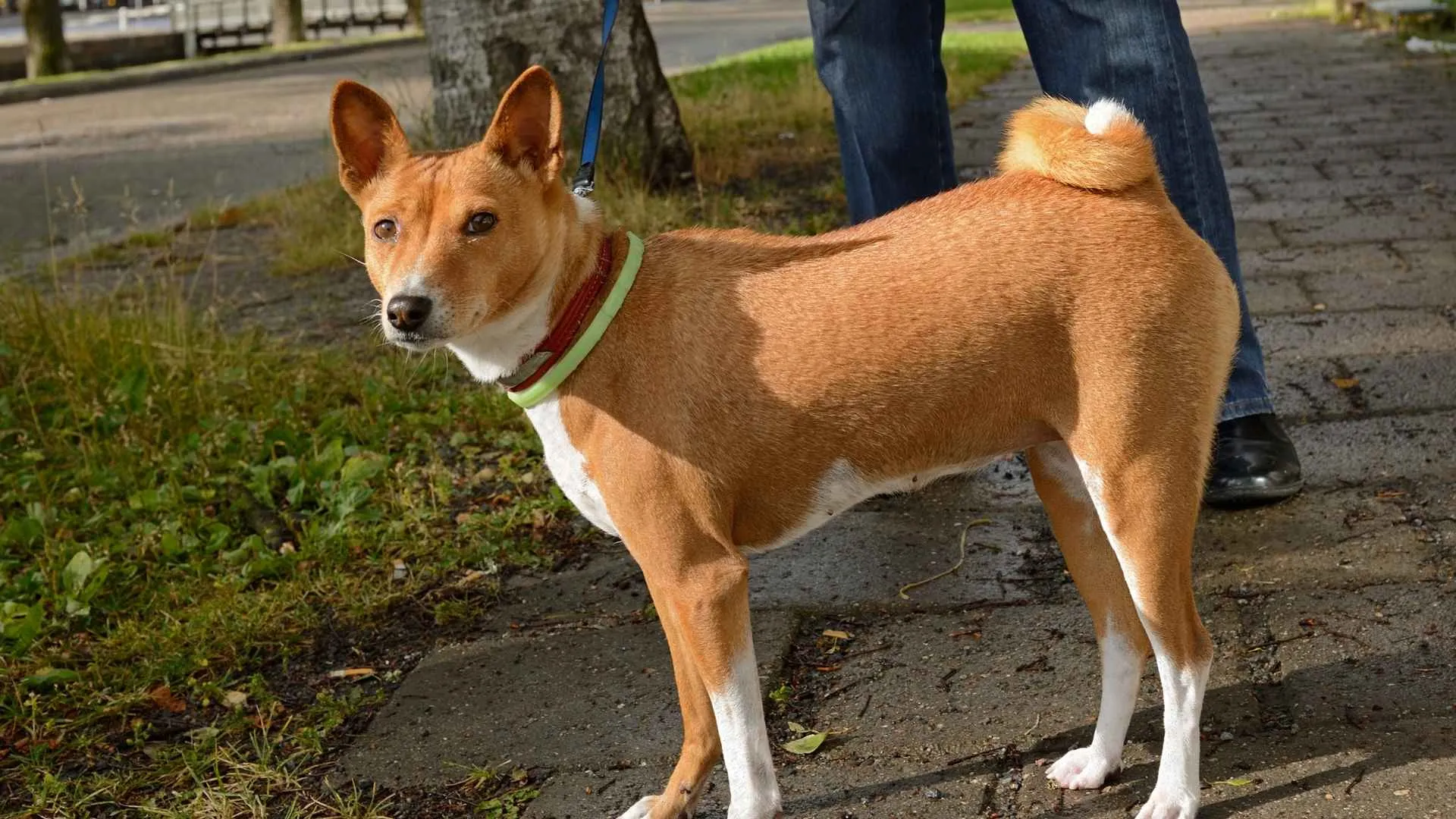
Basenjis are naturally clean, agile dogs with low grooming needs and a strong constitution. WebMD notes that Basenjis typically have a good lifespan for their size, averaging between 13 and 14 years. Their average lifespan is a testament to their hardiness, though regular vet checkups are recommended to monitor for hypothyroidism and hip concerns.
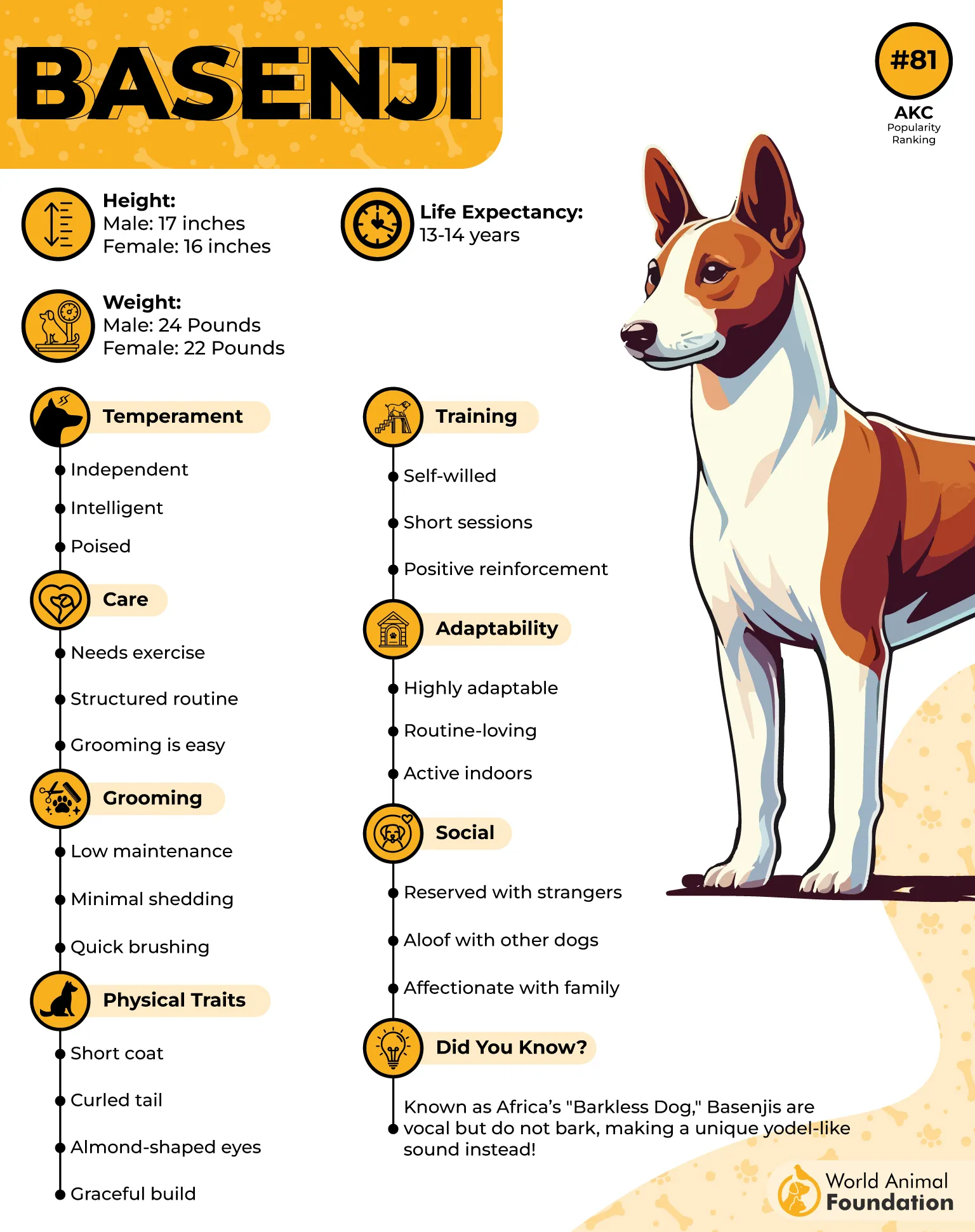
What Should Owners Watch For?
While generally healthy, Basenjis may be genetically predisposed to Fanconi syndrome, a kidney condition, so early screening or DNA testing can be beneficial. They need structured mental and physical activity to prevent boredom and behavioral issues.
What Makes Their Behavior So Unique?
Often compared to cats, Basenjis are known for their aloof yet intelligent personalities and fastidious grooming habits. They don’t bark, but instead produce a yodel-like sound. Their smooth, short coats shine in the sun and come in striking combinations like red and white or black, brindle, and white.
Fun Fact: The Basenji’s yodeling vocalization is so distinctive that it’s earned them the nickname “barkless dog”, a unique trait among canines.
5. Border Collie
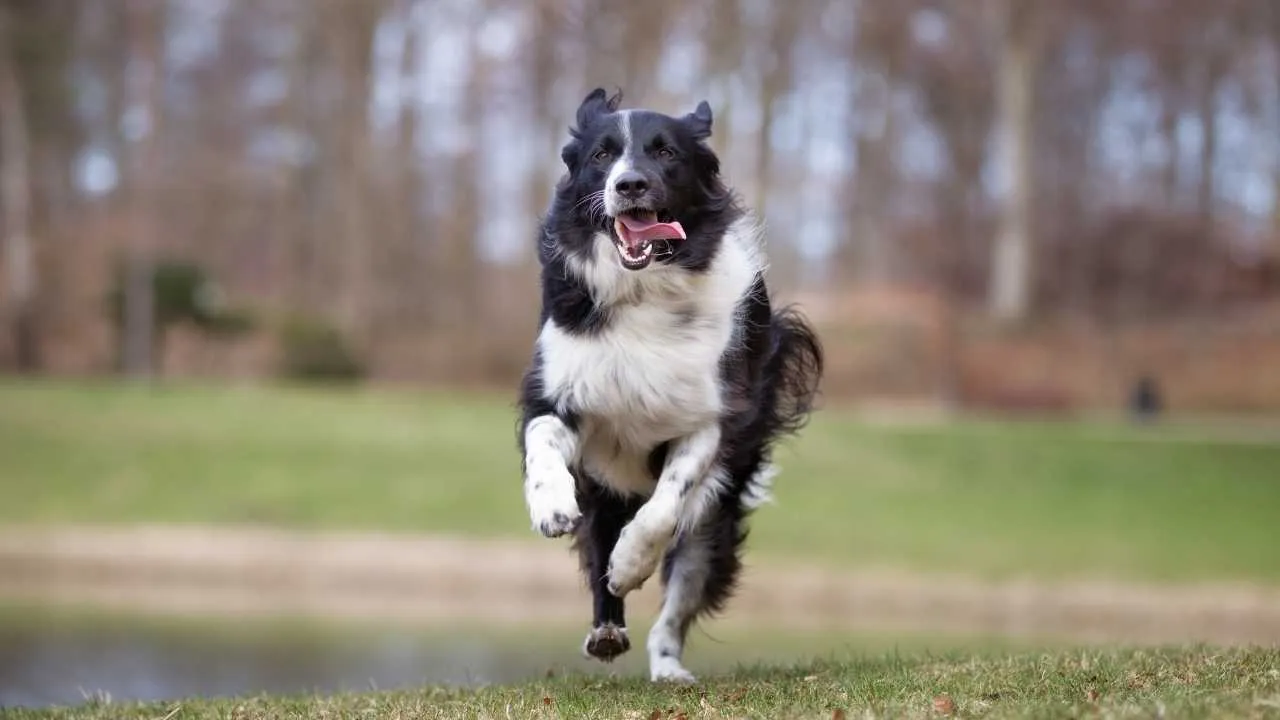
Border Collies are among the most athletic and intelligent breeds, excelling in agility and work-based roles. Their energy and stamina contribute to their long average life expectancy of 12 to 15 years and overall strong health.
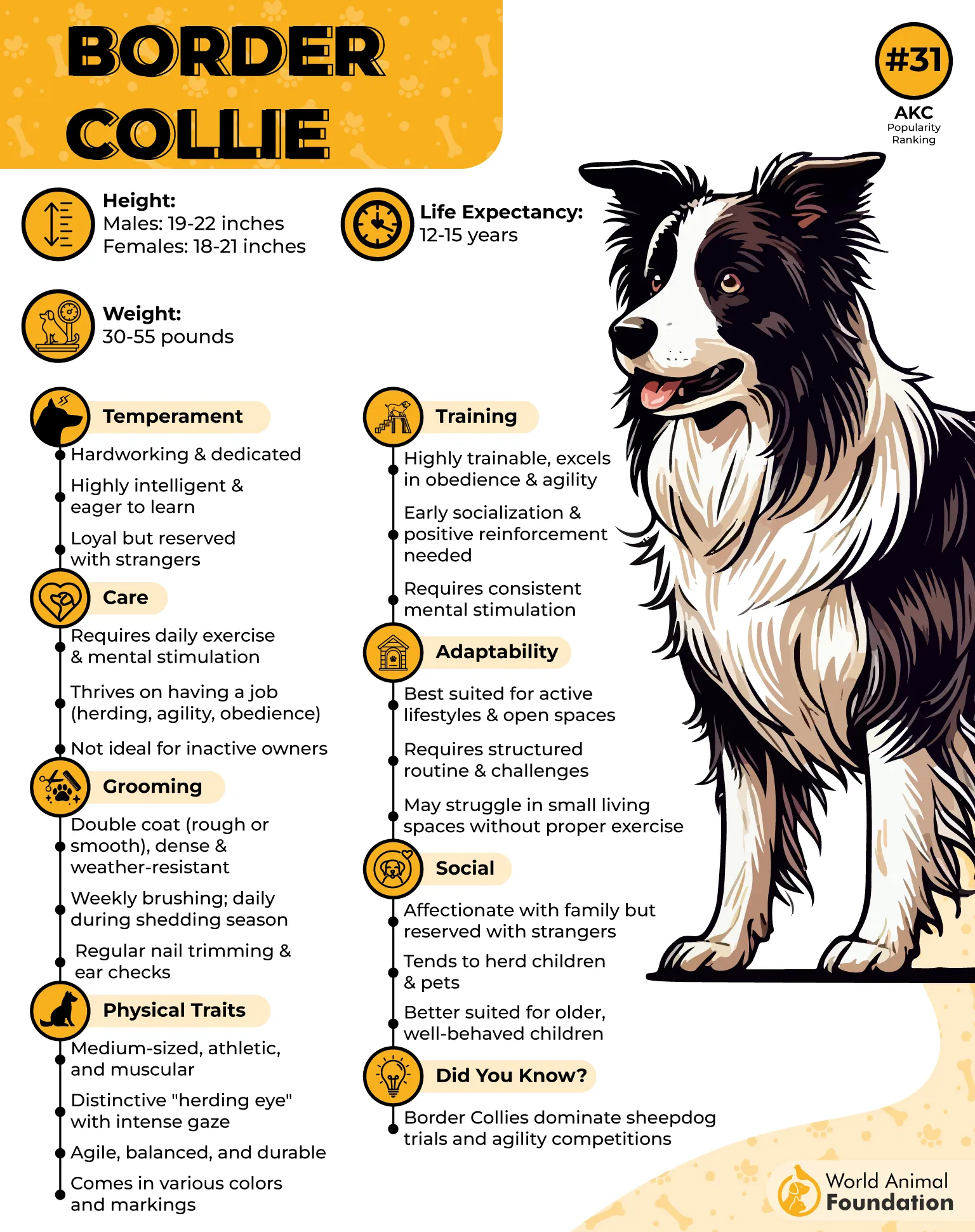
What Dietary Needs Should Be Managed?
Maintaining a healthy weight is important for them. These active dogs thrive on a high-quality diet tailored to their life stage. Because they are prone to weight gain if overfed, portion control and calorie monitoring are essential. Treats should be used sparingly, and water should always be available.
What Makes Their Intelligence Stand Out?
With unmatched focus and problem-solving ability, Border Collies require mental stimulation as much as physical. Though generally healthy and encounter few health issues, they can be predisposed to conditions such as deafness, epilepsy, and collie eye anomaly, so routine veterinary care is key.
Fun Fact: Border Collies are so mentally sharp that they’ve been known to learn hundreds of words, making them champions of advanced obedience and herding competitions.
6. Shiba Inu

Petplan states that Shibas, with their fox-like appearance and confident, attentive nature, are a favored breed among experienced pet parents seeking a devoted companion.
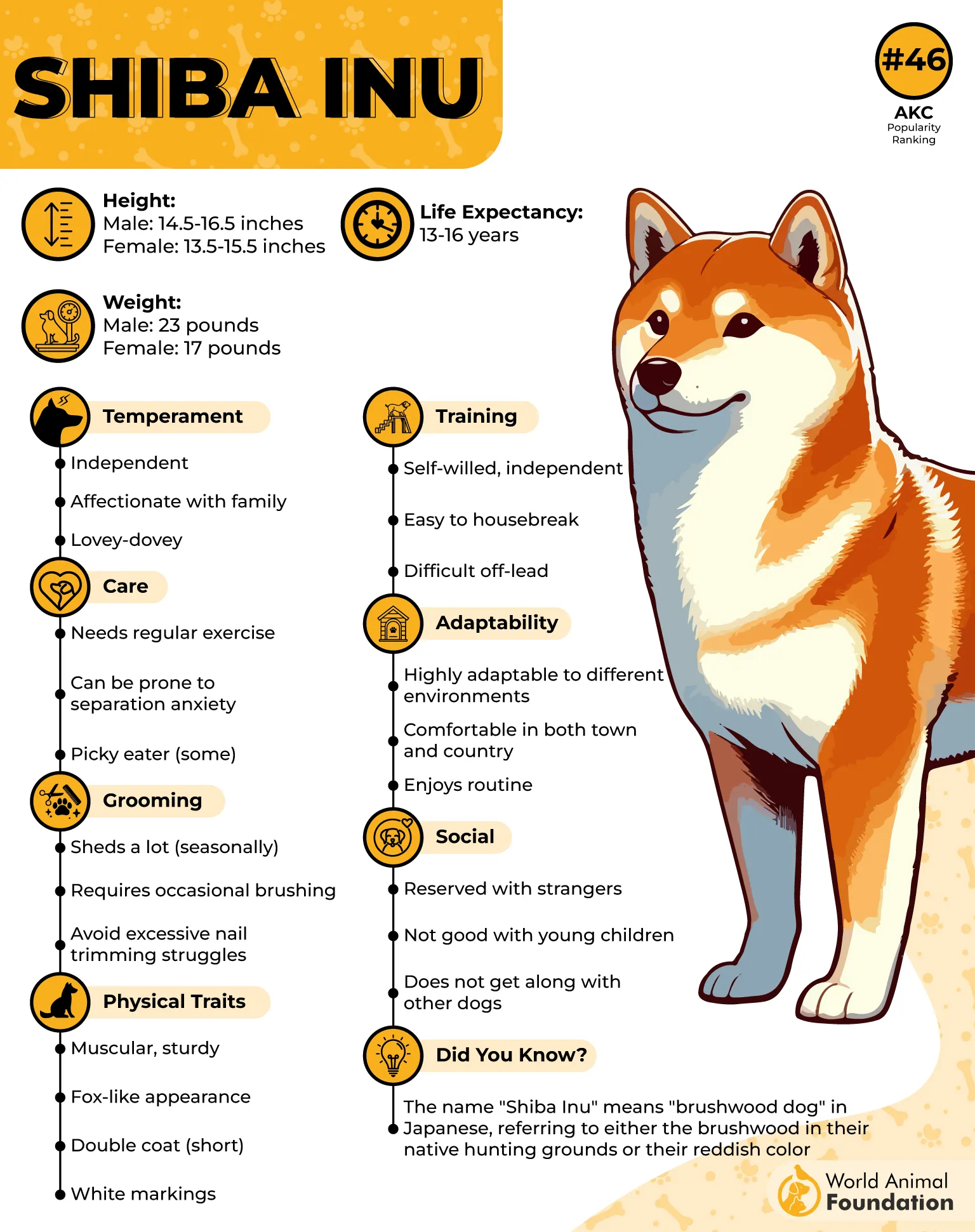
What Supports Their Longevity?
Shiba Inus are known for their strong genetics and overall excellent health, thanks to their ancient lineage. With proper care, they can live long, active lives and typically avoid many major health problems, though arthritis may appear in their senior years.
What Should Owners Be Aware Of?
These compact, alert dogs require daily mental and physical exercise to prevent boredom and anxiety. Their high intelligence makes them quick learners but also independent thinkers, often resistant to traditional obedience training.
Why Are They So Distinctive?
Shibas boast a fox-like look, complete with a thick coat, upright ears, and curled tail. Originally bred in Japan for hunting, their name literally translates to “small dog.” They’re also infamous for the dramatic “Shiba scream” when displeased or excited.
Fun Fact: Despite their bold personality, Shiba Inus are fastidious groomers, often compared to cats for their cleanliness and self-care habits.
7. German Shorthaired Pointer
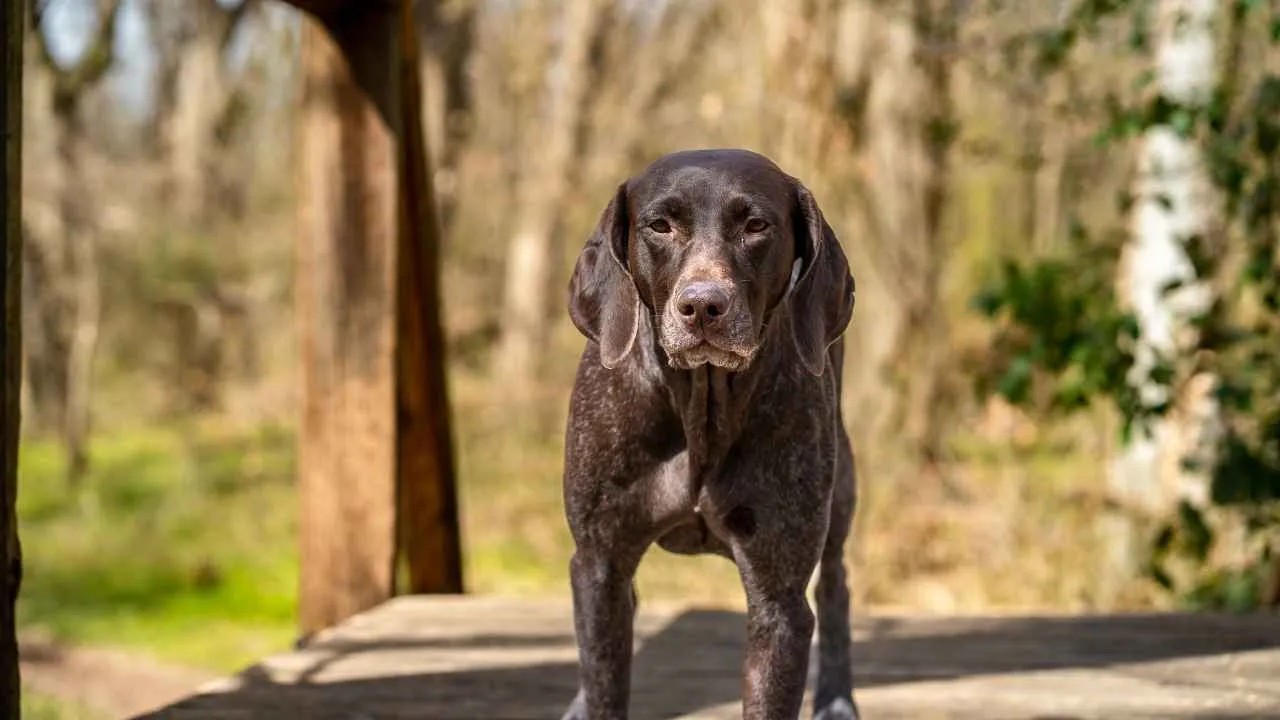
German Shorthaired Pointers are high-energy, athletic dogs that thrive with regular physical activity. Their active lifestyle helps maintain their health, and they often live 12 to 14 years when properly cared for, and they are best suited for active families.
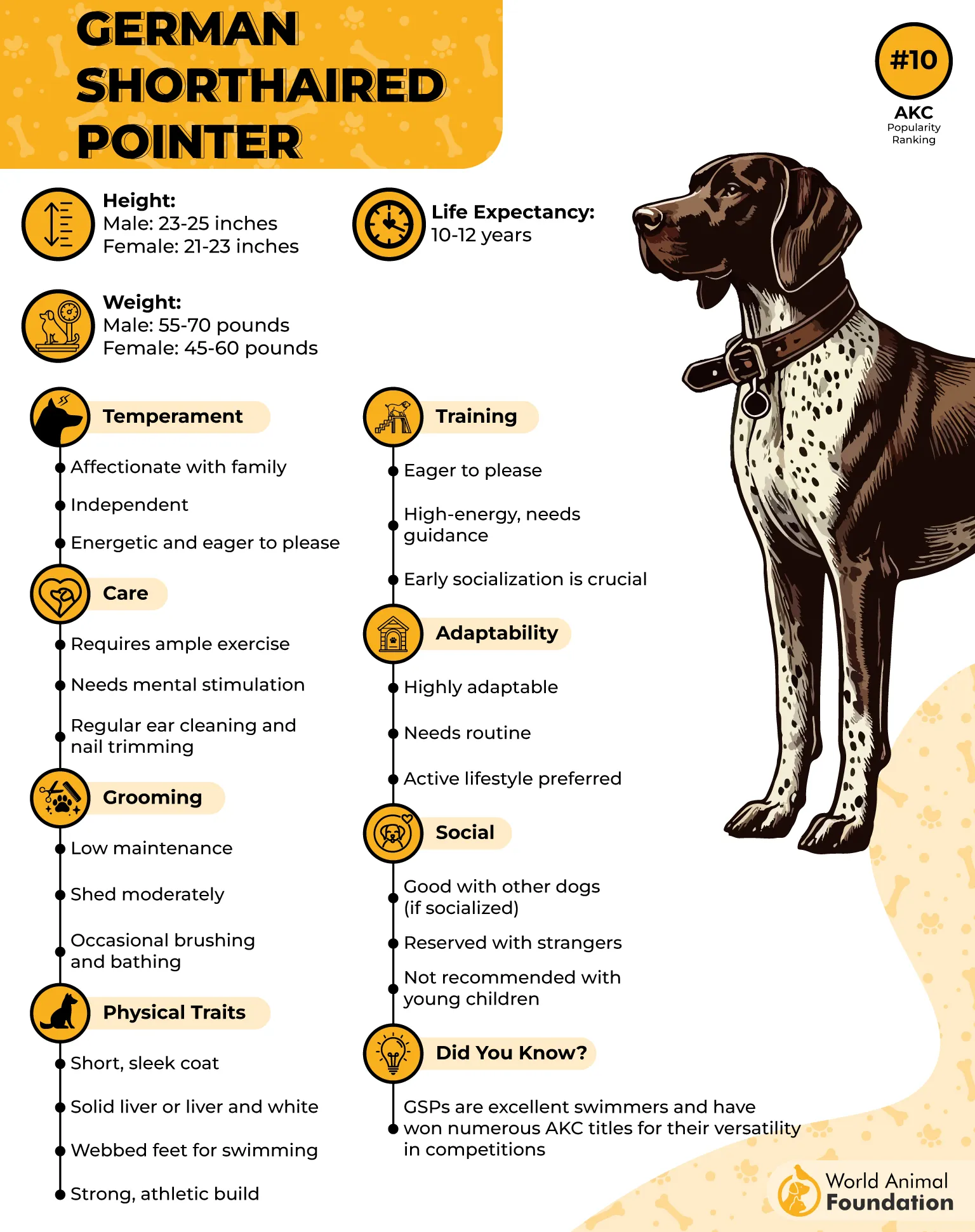
What Should Owners Keep an Eye On?
Though typically robust, GSPs can be prone to a few genetic concerns like hip dysplasia, gastric dilatation volvulus, and von Willebrand’s disease. Their energetic nature also makes them more susceptible to injuries if not monitored during intense play.
What Sets Them Apart?
Originally bred as versatile hunting companions, GSPs are friendly, alert, and always eager to engage. They’re generally quiet, affectionate with families, and do well with other pets when proper training is provided. Weekly grooming and space to roam, like a large yard, keep them at their best.
Fun Fact: Despite their field-ready energy, this hunting dog can be surprisingly calm indoors and is known for happily greeting everyone they meet.
Conclusion
When it comes to choosing a dog that will live a long, active life, understanding breed-specific health tendencies is essential. From the energetic Australian Cattle Dog to the clean and cat-like Shiba Inu, many of the healthiest dog breeds boast strong genetics, resilience, and vitality into old age. These breeds typically require less medical intervention, though routine care and a balanced lifestyle remain critical for any dog to stay healthy.
While purebred dogs like the German Shorthaired Pointer and Basenji have reputations for good health, mixed-breed dogs often benefit from broader gene pools that reduce the risk of inherited conditions. Working with reputable breeders can also make a difference, as they prioritize health screenings and responsible practices to ensure each puppy has the best start in life.
It’s worth noting that some of the healthiest companions include dog breeds native to specific climates, like the Siberian Husky, or compact and clever types such as Toy Poodles and German Pinschers. Whether you’re selecting the only dog breed for your home or adding a new friend to the family, prioritizing overall wellness will help ensure your dog remains active and joyful throughout every stage of life.


